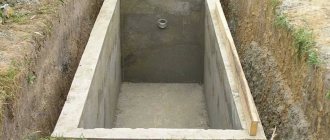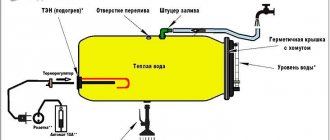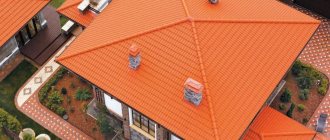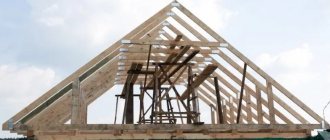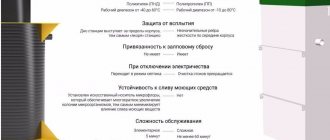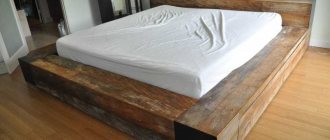A hammock is an excellent “remedy” for fatigue and stress relief after a working day. Just a few hours spent in it will help you have a good rest, sleep and gain strength. Nowadays, stores offer a huge selection of different types of hammocks, but it’s much more pleasant to make one yourself. The easiest option is to sew it from fabric, and you don’t even have to buy it; you can use old things that have been lying idle for a long time.
Type of fastener
Hammocks can be classified as follows:
- With a bar - a piece of fabric is attached to the supports using cables passed through the bar. A hammock for a summer house with a frame has a more stable design, but is more voluminous.
- Without strap - fastened similarly to the previous one, but does not have strips. Therefore, the edges of the hammock are turned up.
Option from old jeans
To make such a hammock, we will need several old jeans, their number depends on the size and degree of wear and cutouts. It is best to choose jeans that are very different in color, but it’s okay if the tones are similar.
- First you need to unravel the jeans so that pieces of fabric are formed that are approximately the same size.
- Next, we mark out 40x40 cm squares and cut them out (it’s better to make a pattern first), in total we will need 40 of these squares to make 2 canvases (20 squares for each).
- We sew the squares: first into strips of 4 pieces, then we sew the strips together. The result should be two 4x5 canvases (approximately 150x190 mm, the size will decrease slightly due to the seams).
Advice! If the colors of the jeans are very different, we recommend placing the squares in a checkerboard pattern. In any case, you need to use your imagination here!
- Next we make the hangers. To do this, we cut strips measuring 5x80 cm from scraps of fabric. We will need 10 pieces (5 on each side).
- We sew each strip with a double turn.
- We sew the fabrics together along with our strips.
- We strengthen the resulting suspensions with rope.
The hammock is ready, all that remains is to hang it, we will look at this in more detail below.
Material of manufacture
Depending on the material used, modern hammocks are divided into four types:
- Hammock net. It is made from mesh. The large mesh digs unpleasantly into your back, so it is recommended to lay something over it. Hammocks with fine mesh do not have this problem.
- From fabric. Very comfortable, provided the fabric is strong and airtight. Disadvantages: very bulky and easily dirty.
- Made from synthetics. Very durable, easy to care for, durable.
- A wicker hammock made from strips of tree bark. The disadvantage is the inconvenience of storing them.
Air chair
This design can be used as a children's hammock, however, adults will not refuse to relax and swing in it. To work you will need:
- drill;
- five slats: three thin - up to eighty centimeters in size, and two more thick - ten centimeters longer than the first;
- screws, nails and hammer;
- thread and needle;
- five strong ropes: two one and a half meters long, and three two and a half meters long;
- fabric (approximately meter by meter).
By shape
Hammocks can be of various shapes:
A hammock chair is used for sitting. It's quite compact. Children love to use it as a swing.
Hammock cocoon. These hammocks are round in shape. They are often taken on hikes because they are very easy to attach to a branch.
Hanging hammock. The most common type. All kinds of materials are used for them.
Purpose of the frame
In most cases, hanging hammocks are used. They are quite cheap and convenient. The only inconvenience that may arise when using them is the limited number of places where they can be placed.
The device of a fabric hammock with two supports.
In order to hang a hammock, you need to have either two trees growing next to each other, or at least two columns. But such a structure will still be stationary, without any possibility of moving the hammock to a more convenient place, and installing poles throughout the entire area is not very convenient.
To correct this shortcoming, many companies have released various models of frame hammocks. They differ from hanging ones only in the ready-made portable structure on which the hammock is attached. A high-quality frame product will cost a lot of money, and cheap Chinese ones will not always live up to expectations. What to do then? Build the frame yourself.
The most common materials for arranging a frame hammock are wood and metal. Both of these materials can withstand heavy loads without deformation. A cheaper option is wood. Of course, you will have to tinker with its finishing and other little things, but the effect will be incredible. It is possible to make a metal support, but this will require special machines that can bend the metal at a strictly defined angle. Since the second option is not readily available, the first should be considered.
Load limit
Each material has a certain maximum load. Let's look at the most popular options:
Brazilian nut. This hammock can withstand a load of up to 190 kg. The most expensive material. Without special care, it dries out and deteriorates.
Rattan. Can withstand a load of about 120-130 kg. Expensive, but beautiful material.
Cotton. Durable and popular. Withstands weight up to 160 kg. When overloaded, the fabric breaks.
Synthetics. The maximum permissible weight is 130 kg. Lying on a synthetic hammock is unpleasant, so they are rarely made.
- A DIY mailbox is a beautiful decoration and a useful addition to a suburban area
A house for children is a place where a fairy tale becomes reality, we create it ourselves
Bridges for a dacha - a picturesque element of the landscape in a suburban area
Parachute silk. Withstands 160-200 kg. This is its main advantage.
Video description
There are several types of hammocks on the market. Therefore, if you want to buy fabric for a hammock, it is very important to take into account the design features and type of product in order to correctly and accurately select the amount of material required. Brazilian hammocks can be suspended on ropes (a transverse traverse and special straps are used), and are intended for those who prefer comfort. The width of the hammock is 2 m. The design itself is quite complex and the product is expensive. It assumes an increased load, so more supports are required.
Hammocks using Mexican technology are made from fabrics or ropes Source proekt-sam.ru
Fabric for a homemade hammock
If you are planning to make a hammock for your garden with your own hands, first of all you should decide what you will need to use for this.
When choosing fabric, you should pay attention to the following characteristics:
- strength - the fabric must withstand heavy loads;
- accessibility is important, since a person who wants to make a hammock with his own hands is usually trying to save money;
- comfort - the fabric should be pleasant to the body.
To make your own hammock, you can use the following types of fabric:
Sackcloth. The material is quite cheap, environmentally friendly, wear-resistant, and perfectly breathable. Its disadvantages are tartness and the need for thorough drying.
Cotton. Eco-friendly, durable, pleasant, non-electrifying fabric that is perfectly breathable. Its disadvantages are susceptibility to creasing, color fading under the influence of sunlight, and the possibility of shrinkage if improperly washed.
Linen. The material is hypoallergenic and durable, perfectly breathable. Disadvantages include the possibility of shrinkage during washing, severe creasing and difficulty smoothing out wrinkles.
Parachute silk. It perfectly repels moisture, is pleasant to the touch, can withstand the heaviest loads and has a long service life.
Among the disadvantages, it is worth noting the ease of contamination, high electrification, difficulty in smoothing and a decrease in strength with prolonged exposure to sunlight.
All of the listed types of fabric have their pros and cons. It is worth paying attention to the characteristics that are most important to you.
How to hang it in the country house?
The ideal solution for attaching a hammock at the dacha would be two trees located nearby, but they are not always present, so you can make the support yourself. To do this, you can use metal poles with a cross-section of about 8 cm; it is recommended to bury them 80-100 cm into the ground and fill them with concrete for greater strength.
A suitable height for hanging is 1-1.5 meters. The distance between the support points is directly related to the length of the hammock. The length of the fabric, plus 30 centimeters for deflection, is the ideal distance between the support points. It should be borne in mind that the higher the hammock is, the larger it should be.
If for some reason it is not possible to install the poles or there is a need to periodically move the hammock, you can buy a ready-made frame or make it yourself from wood or metal.
Single hammock
Let's look at how to make the most ordinary hammock yourself.
For standard size you need:
- piece of fabric 2.5*1.4 m;
- slats that can be made from wood of a suitable shape (the easiest option is to use a mop handle);
- 16 m of strong rope;
- 10 eyelets.
The hammock assembly process consists of the following steps:
All sections are folded and stitched. The width of the edge is made for the side ropes.
Mark the location of the eyelets. You should not attach them closer than 15 cm from the edge. The distance between is approximately 22 cm. Cut holes on the fabric equal to the inner diameter of the eyelets. Fix 5 eyelets on each side.
Holes are drilled on the plank. The first is at a distance of 1.7 cm from the edge, the subsequent ones - after 11.2 cm. 10 holes with a diameter of 1.5 cm must be made on each plank.
Two pieces 2.7 m long and 10 pieces 1 m long are cut. Long pieces are passed into the edging made on the sides of the hammock.
The meter-long pieces are threaded through a hole in the bar, a grommet, and returned back through the next hole in the bar. This is how all the ropes are threaded one by one.
Gather all the ropes together and tighten them into a strong knot, which is subsequently braided.
After this, the type of fastening is determined.
DIY Mexican cocoon
One of the simplest options for making fabric is to sew a cocoon hammock. For this we need: two pieces of fabric measuring 300x150 mm, an old blanket, strong rope. For a Mexican hammock, use bright fabric, preferably striped.
We sew both pieces of fabric together and leave a small gap to place the blanket there. We make 3 cm folds along the short side and thread a rope through it. We pull the fabric along the rope and tie a knot. Our Mexican hammock is ready, all that remains is to hang it.
Old things, such as jeans, tarpaulin, and a raincoat, are also suitable for making a fabric hammock. The principle of sewing is the same for everyone, but there are some features that we will consider below.
Mounting methods
Let's look at the most popular mounting methods:
- Loop. For this, a strong cable is used, the length is selected based on the thickness of the tree. You can secure it using a simple knot, a noose or a bowline.
- Sling tape. They form a tightening loop from it, circling it around the tree and threading one edge into the eye of the second. A wooden stopper is inserted into the free eyelet, where the hammock is subsequently wound.
If desired, the finished hammock can be decorated. Photos of hammocks for the garden will give you ideas on how to do this. It doesn’t matter which hammock you choose: purchased or homemade, you can enjoy a wonderful outdoor recreation in it.
Progress
Five steps need to be taken:
- Twenty holes are made in the slats at intervals of a couple of centimeters.
- The weaving threads are folded in half and secured to the ring using loops.
- The threads are threaded through holes in the bars to a depth of up to a third of a meter and secured with knots.
- A network is being woven.
- The free ends of the threads are threaded through holes in the second rail and secured to the ring.
All that remains is to secure the hammock in the chosen place with the help of carabiners, lay down a blanket and decorative pillows and enjoy relaxing in a beautiful hanging bed.

